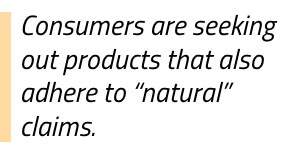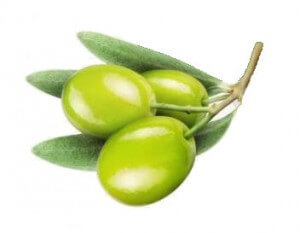Anti-Aging Formulation, Part 1: Ageless Solutions, Innovative Answers
By Amit Patel and Traci L. Cassell
Growing demand meets growing innovation
As the popularity of multifunctional personal care and beauty products continues to skyrocket, so does the demand for anti-aging products that offer multiple benefits, additives, and claims. With exciting new advancements in technology, formulators now have the chance to deliver the aesthetics, effectiveness, and results consumers look for – all in one multifunctional personal care product, packed with anti-aging benefits.
These advances and innovations in the science behind these products are more varied, exciting, and promising than ever – for both formulators and consumers.
New product development: a balancing act for formulators
New product development and creation requires a delicate balancing act. First and foremost, the formulator must develop an effective, aesthetically pleasing personal care product that delivers the results the consumer wants and expects. To design a new, multi-use product, many formulators will modify a proven formula by adjusting emollients, modifying esters, or adding structuring agents. Or, a successful formula will have new beneficial additives, like anti-aging compounds, introduced.
But during this experimentation, a variety of challenges can arise:
- First, when creating a new product, a formulator has to take care to ensure each and every new additive or ingredient retains its original, maximum stability and potency.
- Second, it’s important to remember that all variables changed during product development (like viscosity, pH, composition, or the order of addition), must be carefully supervised and monitored, so as to maintain a product’s strength, vigor, and stability.
- Third, anti-aging components must be treated delicately, since even very small amounts can affect a formula’s stability, or potentially interact negatively with another additive, thus losing their efficiency and effectiveness.
The formulator also needs to create a new product that can be produced at a quick and economical rate, coordinate between the oft-competing needs of the regulatory, operations, and marketing teams, and always try to deliver the best multi-functional, multi-beneficial product that’ll excite and delight the consumer with fast and effective results.

Three keys to successful product development
A formulator must have three key considerations in mind to preemptively forecast development process obstacles:
- The formulator must thoroughly understand essential anti-aging ingredients and their benefits.
- Familiarity with the chemical and physical properties of an anti-aging ingredient will help bypass common roadblocks in product development.
- Learning the best processing procedures will also help create a more successful experience with personal care product development for the formulator.
In this article, we’ll cover these three key considerations as they apply to two incredibly effective and important anti-aging ingredients: olive-based emulsifiers and glycolic acid.
Consumers crave “natural”: olive-based emulsifiers
Today, consumers not only want multifunctional, multi-beneficial personal care products, they are also increasingly drawn towards products with “natural” claims. Olive-based emulsifiers can satisfy both of those needs. Olive-based emulsifiers deliver essential and potent anti-aging fatty acids, help create a silky, smooth touch and feel to the consumer’s skin, and also slip into the “natural” category more and more consumers look for when buying new multifunctional personal care products.
The Olivatis™ Emulsifiers line is a family of PEG-free and palm-oil-free nonionic emulsifiers that use lamellar structures to create the rich, opulent texture a customer desires in a lotion, spray, or cream, while still adhering to the “natural” category.

Also, thanks to their great compatibility with low-HLB compounds, Olivatis 19 (Olive Oil Polyglyceryl-Esters (and) Phospholipids) and 18 (Olive Oil Polyglyceryl-6 Esters(and) Sodium Stearyl Lactylate (and) Cetearyl Alcohol) combine well with peptides and other powerhouse anti-aging compounds like glycolic acid and hyaluronic acid, the two extremely popular anti-aging additives.
During the development process, Olivatis™ Emulsifiers can become shear sensitive. Luckily, their structure allows the formulator to bypass the final micronizing high shear step. Even better, these olive esters can work in either a cold or hot process.
All natural Olivatis™ Emulsifiers satisfy both the formulator for their delivery on structure, stability, and aesthetics, and the consumer’s desire for naturally derived personal care products.
Glycolic acid and sodium hyaluronate: New advancements to tried-and-true favorites
Glycolic acid is a favorite and familiar component of anti-aging personal care products for both formulators and consumers. Glycolic acid has a widely touted ability to deeply penetrate cells and zap fine lines, dullness, acne, and other skin woes and anti-aging concerns.
Now, with the new advancement of GlyAcid®, formulators can have a high purity glycolic acid, specially created for personal care products – sans formaldehyde. GlyAcid® also adheres to strict industry regulations and standards.
Sodium hyaluronate also continues to be used frequently by chemists in formulating personal care products. Sodium hyaluronate has an amazing capacity to retain moisture, build elasticity, and help plump up the appearance of wrinkles and fine lines. These noticeable anti-aging results make it a dependable and trustworthy additive to any multifunctional, multi-beneficial personal care product. It’s is truly a stellar addition to any anti-aging personal care product.
EndiMoist® HA is a new, high purity sodium hyaluronate that’s non-GMO and Eco-cert, as well as non-animal derived. This product also complies with ever-increasingly stringent industry standards.
Challenges in processing with glycolic acid
It’s important for formulators to note that there are also several challenges when using GlyAcid® and EndiMoist® HA during the product development process, as there would be with any similar ingredients. These challenges include: sustaining product potency and stability, maintaining pH control during formulation, the correct addition time during processing, and proper handling and storage.
First, there’s always the challenge of maintaining both product stability and product effectiveness. A formulator must be sure to control the acid dissociation constant (pKa) when using any GlyAcid during product development. Similarly, the formulator must also always take care that they’re including a proportional amount of both acid and the esterified form of the acid during formulation. Additionally, it’s important to note that since glycolic acid follows the Henderson Hasselbach equation. Adding sodium glycolate to the formula prevents pH from drifting in either direction.

Formulators also need to know the best point to add glycolic acid during product formulation. Typically, adding glycolic acid should happen during the beginning of the additions. Then, neutralize in situ or in sub-phase, and then add the sub-phase into the main batch. It’s also best to add glycolic acid during post-emulsification, during part of the cool-down phase, or as part of the sub-phase for creams and lotions. By maintaining a pH just above 3.8, especially in non-ionic systems, the formulator will avoid conflict and obstruction between the glycolic acid and any pH-sensitive structuring agents.
One final demand on formulators when developing new products with glycolic acid? Maintaining proper handling and storage. The cloud point for glycolic acid is a relatively high, as is glycolic acid’s ability to easily retain moisture from the air. Samples that are frequently exposed to the air or elements, via containers that are regularly opened and shut, can become cloudy. If warmed gently, the solution does return to clear.
But using a diluted solution, such as GlyAcid® 70HP, can circumvent some of these potential handling issues. Gentle warming of the solution above GlyAcid 70HP’s cloud point of 57°F should fix cloudiness, and proper storage should prevent rapid degradation.
Glycolic acid is an incredibly powerful, consumer-pleasing and proven additive to include in any anti-aging, multi-functional personal care product. By taking these steps, a formulator can extract its fullest potential. ‘
In Part 2…
Next, in Part 2 of this series, we’ll go over the groundbreaking advancements with sodium hyaluronate and hyaluronic acid, as well as stunning new developments in ingredient delivery systems.
Plus, we’ll soon publish a technical white paper that goes into detail about what’s covered in both these articles, so stay on the lookout for it!

